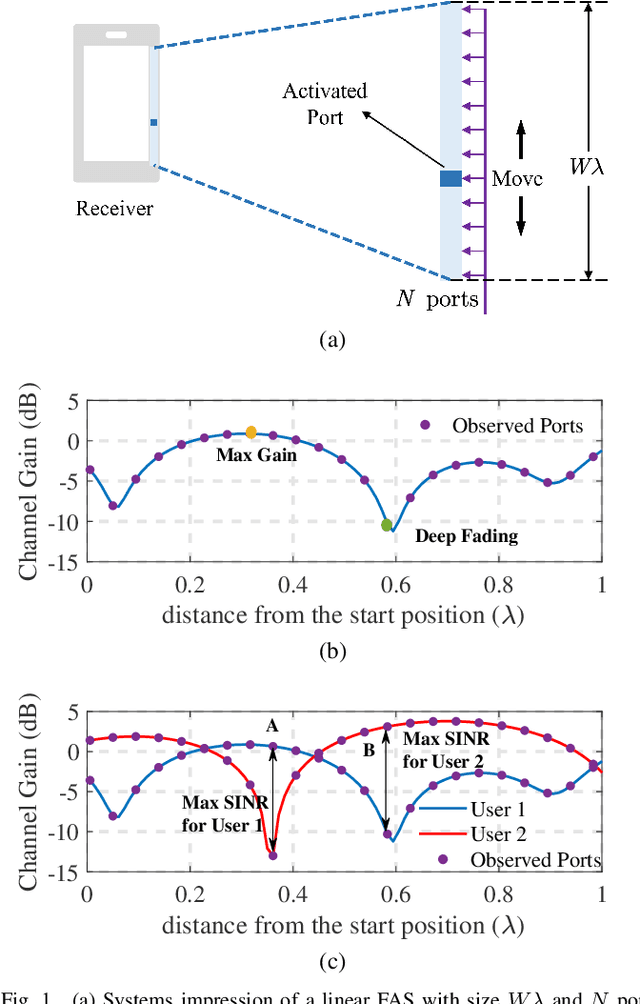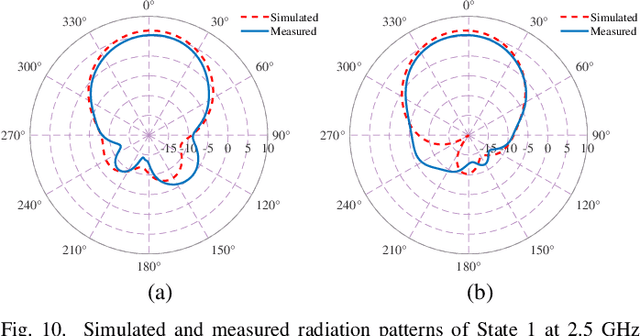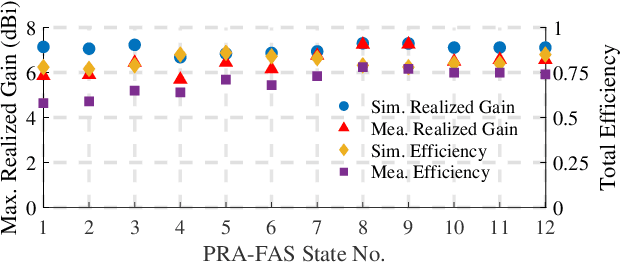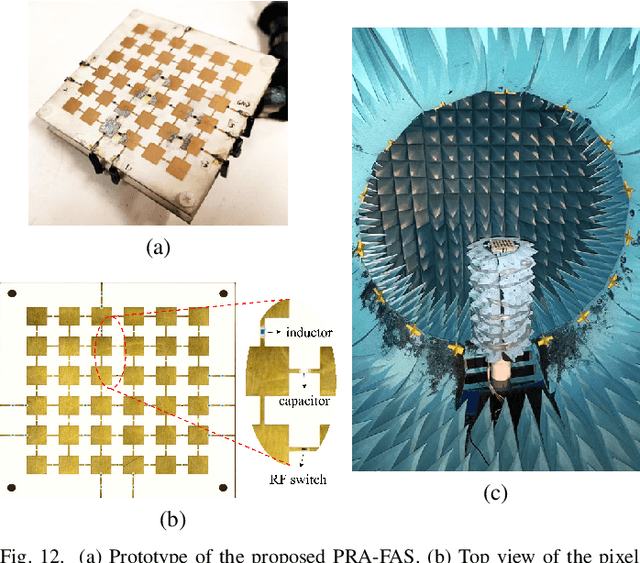Zhaoyang Ming
A Hybrid Transmitting and Reflecting Beyond Diagonal Reconfigurable Intelligent Surface with Independent Beam Control and Power Splitting
Apr 13, 2025Abstract:A hybrid transmitting and reflecting beyond diagonal reconfigurable intelligent surface (BD-RIS) design is proposed. Operating in the same aperture, frequency band and polarization, the proposed BD-RIS features independent beam steering control of its reflected and transmitted waves. In addition it provides a hybrid mode with both reflected and transmitted waves using tunable power splitting between beams. The BD-RIS comprises two phase reconfigurable antenna arrays interconnected by an array of tunable two-port power splitters. The two-port power splitter in each BD-RIS cell is built upon a varactor in parallel with a bias inductor to exert tunable impedance variations on transmission lines. Provided with variable reverse DC voltages, the two-port power splitter can control the power ratio of S11 over S21 from -20 dB to 20 dB, thus allowing tunable power splitting. Each antenna is 2-bit phase reconfigurable with 200 MHz bandwidth at 2.4 GHz so that each cell of BD-RIS can also achieve independent reflection and transmission phase control. To characterize and optimize the electromagnetic response of the proposed BD-RIS design, a Th\'evenin equivalent model and corresponding analytical method is provided. A BD-RIS with 4 by 4 cells was also prototyped and tested. Experiments show that in reflection and transmission mode, the fabricated BD-RIS can realize beam steering in reflection and transmission space, respectively. It is also verified that when operating in hybrid mode, the BD-RIS enables independent beam steering of the reflected and transmitted waves. This work helps fill the gap between realizing practical hardware design and establishing an accurate physical model for the hybrid transmitting and reflecting BD-RIS, enabling hybrid transmitting and reflecting BD-RIS assisted wireless communications.
A Pixel-based Reconfigurable Antenna Design for Fluid Antenna Systems
Jun 08, 2024



Abstract:Fluid Antenna Systems (FASs) have recently been proposed for enhancing the performance of wireless communication. Previous antenna designs to meet the requirements of FAS have been based on mechanically movable or liquid antennas and therefore have limited reconfiguration speeds. In this paper, we propose a design for a pixel-based reconfigurable antenna (PRA) that meets the requirements of FAS and the required switching speed. It can provide 12 FAS ports across 1/2 wavelength and consists of an E-slot patch antenna and an upper reconfigurable pixel layer with 6 RF switches. Simulation and experimental results from a prototype operating at 2.5 GHz demonstrate that the design can meet the requirements of FAS including port correlation with matched impedance.
A Shared-Aperture Dual-Band sub-6 GHz and mmWave Reconfigurable Intelligent Surface With Independent Operation
Jun 05, 2024Abstract:A novel dual-band reconfigurable intelligent surface (DBI-RIS) design that combines the functionalities of millimeter-wave (mmWave) and sub-6 GHz bands within a single aperture is proposed. This design aims to bridge the gap between current single-band reconfigurable intelligent surfaces (RISs) and wireless systems utilizing sub-6 GHz and mmWave bands that require RIS with independently reconfigurable dual-band operation. The mmWave element is realized by a double-layer patch antenna loaded with 1-bit phase shifters, providing two reconfigurable states. An 8x8 mmWave element array is selectively interconnected using three RF switches to form a reconfigurable sub-6 GHz element at 3.5 GHz. A suspended electromagnetic band gap (EBG) structure is proposed to suppress surface waves and ensure sufficient geometric space for the phase shifter and control networks in the mmWave element. A low-cost planar spiral inductor (PSI) is carefully optimized to connect mmWave elements, enabling the sub-6 GHz function without affecting mmWave operation. Finally, prototypes of the DBI-RIS are fabricated, and experimental verification is conducted using two separate measurement testbeds. The fabricated sub-6 GHz RIS successfully achieves beam steering within the range of -35 to 35 degrees for DBI-RIS with 4x4 sub-6 GHz elements, while the mmWave RIS demonstrates beam steering between -30 to 30 degrees for DBI-RIS with 8x8 mmWave elements, and have good agreement with simulation results.
 Add to Chrome
Add to Chrome Add to Firefox
Add to Firefox Add to Edge
Add to Edge